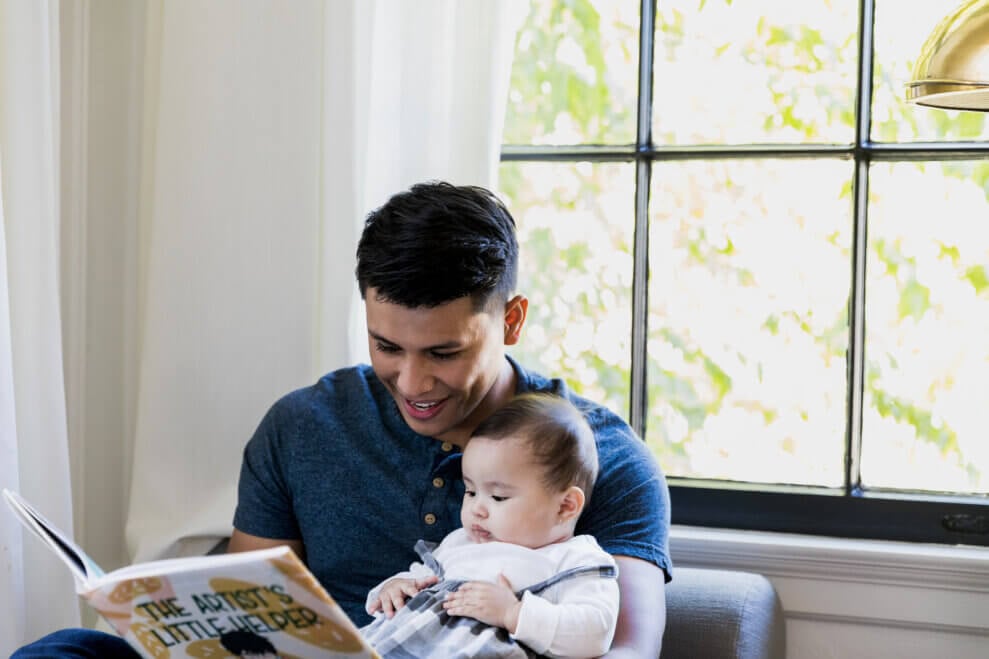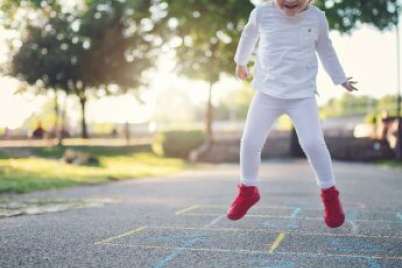
30 engaging baby activities for cognitive & physical development
In early childhood, your baby’s brain is growing and forming new connections every day. And everything you do—from talking and reading to singing and dancing—is helping that process. Even if your baby’s movements seem random and uncoordinated, important development is taking place. They’re gradually building their strength and coordination, and neural connections in the brain are supporting that coordination. That’s why it’s important to give your baby lots of time to explore freely through a variety of movements.
Here are some ideas to help get you started.
Tummy time for strength and coordination
Tummy time: Doing this is important because the skills learned while on the tummy are essential for later development. But infants aren’t born being able to hold their heads up, which is why tummy time can be uncomfortable and frustrating for them. Here are seven steps you can follow to help make tummy time engaging for your little one.
Movement on a rolled-up yoga mat: Another option for tummy time is to use a yoga mat. Place your baby on their tummy and have a rolled yoga mat under their chest, sitting under your baby’s armpits. The yoga mat helps to support your baby when they’re trying to lift their head. This activity helps your baby build arm and core strength.
Sensory play for stimulation and exploration
Pedal a bike: Lay your baby on their back and slowly move their legs as if they’re pedalling a bicycle. This helps your baby to become aware of their legs and how it feels to move them. As a bonus, it also helps to relieve constipation and gas.
Rolling over: Lay your baby down on their tummy, then place a toy or a rattle in front of them. When your baby notices the toy, move it to one side and encourage your baby to roll over to that side. Then move it to the other side to encourage them to roll to the other side. If your baby can’t roll all the way, you can help your baby to roll by supporting them.
Splash time: Fill a container with a few centimetres of warm water. Sitting cross-legged, hold your baby in a seated position on your legs and put their feet in the water. Encourage your baby to kick by moving their feet up and down. Because this is water play, it’s best done outside in warm weather, or inside on a towel somewhere that you can get good and splashy for an extra fun sensory experience!
Encouraging language & vocalization
Reading time: Read picture books and recite nursery rhymes together. When you speak out loud to your baby, be sure to use a lot of inflection and facial expressions.

Singing songs: Try singing a song to your baby, like “The Itsy Bitsy Spider,” for example. It’s a great one because it can be interactive. Lay your baby on their back, place one of your fingers in each of your baby’s hands, and feel them tighten their grasp. As you sing, stretch out your baby’s arms and move them up and down with the words.
Clap, clap, clap your hands: Hold your baby’s arms and gently clap their hands together. Then try clapping hands while singing a nursery rhyme such as “Row Row Row Your Boat.”
Social interaction & bonding activities
Massage: Giving your baby a massage is a great way to stimulate their neuromuscular system. This is best done when they’re between newborn to three months, when they aren’t wiggling out of your grasp.
Sit up and look: Sit your baby on your lap, upright and facing forward like you. Point at things that are happening around you—children playing, cars driving, birds singing, rain falling, etc. Talk to your baby about what you’re seeing. Notice how your baby pushes and strains to sit upright, and maybe even reaches and points at the activity. This is good for building core strength to sit upright unassisted.
Move to music: Moving to music is great for babies who are a little bit older—around seven months and up. Play some fun music and help your baby when they try to push with their legs to stand up by grabbing onto an object. (Most babies try this!) Being nearby to watch is a good idea when they’re still learning to develop better balance in their legs.
Hide and seek: Babies start to develop an understanding of object permanence around six or seven months of age. To support this development, you can play hide-and-seek with your baby’s toys. Show your baby a toy, and while they’re still watching, slowly hide the toy under a small towel or cloth. Make sure that part of the toy is still visible so your baby becomes curious to go and “look” for it. Research shows that seven-month-old infants lose interest in looking longer than two seconds, so don’t hide the toy too far away.
Explore together: Take a walk while exploring your surroundings together. Talk to your baby about what you’re both seeing, again using inflection and facial expressions.
Rolling an oball: Sit a few feet away from your baby. Roll an oball to them and encourage them to roll or throw the ball back to you. (An oball is a large hollow plastic ball with large finger holes to make it easy for a baby to grasp. You can buy one online or at a toy store.) If your baby simply chooses to hold the ball and look at it, that’s okay, too. Offer cheers and hurrahs even if they don’t understand the intention of the game.
Introducing early fine & gross motor skills
Reach and grab: Reaching and grabbing is a crucial stage of your baby’s motor development. As soon as you see them trying to do this, you can help out by providing all kinds of safe shapes and different textures for them to grab on to.
Crawling: By creating a safe space for your baby to explore, and placing toys far apart in open areas, you can encourage your child to crawl and climb. Giving your baby some dedicated time each day to be down on the floor playing and exploring is important at this age and stage. Even better, try to get this time in prior to a nap to hopefully help with them falling asleep easier and staying asleep for longer.

Moving objects from one hand to the other: When your baby is around seven to nine months old, they might start developing more coordinated movements. Especially with reaching, grabbing, and moving an object from one hand to the other. Encourage your baby to grab with one hand and pass their toy to the other. Try sitting in front of your baby and have them follow your movements.
Pincer grasp: The pincer grasp is often mastered during the seven- to nine-month time period as well, and this is another important part of your baby’s fine motor control development. If you have the space, fill a bottom drawer or cupboard in your kitchen with cups, bowls, utensils, and maybe even some pots and pans that are safe to play with. Your baby can open cupboards and explore and play while practicing their fine motor skills and hand-eye coordination.
Create an obstacle course: Well, a small obstacle course, anyway! Spread pillows and cushions around the floor or your living room and place toys on or between the pillows and cushions to encourage your baby to crawl or walk through the obstacles. You might even place a few cushions on top of one another to make a mountain for your baby to climb! Remember to supervise your baby closely.
Drum to their own beat: This one is relatively straightforward. Give your baby something they can use for drumming, such as pots, pans, and spoons or other utensils. (Make sure none of the utensils have sharp edges.) Then let your baby go wild and see what kind of music they can create!
Here are 10 more play ideas for babies of varying ages and at different stages:
- Narrate your day to your baby
- Let your baby hold and roll different types and sizes of a ball
- Play with toys that make noise
- Place soft toys around your baby to encourage movement
- Give your baby some bath toys so they can pour and dunk
- Let your baby explore toys with things to squeeze or buttons to push
- Play peek-a-boo
- Give your baby lots of floor time, on both tummy and back
- Look in the mirror with your baby—it can help with visual tracking, and they love it!
- Fill a bag with your baby’s favourite toys and take them out one at a time, or let your baby pull them out while you supervise





